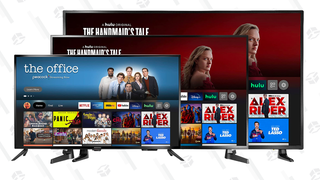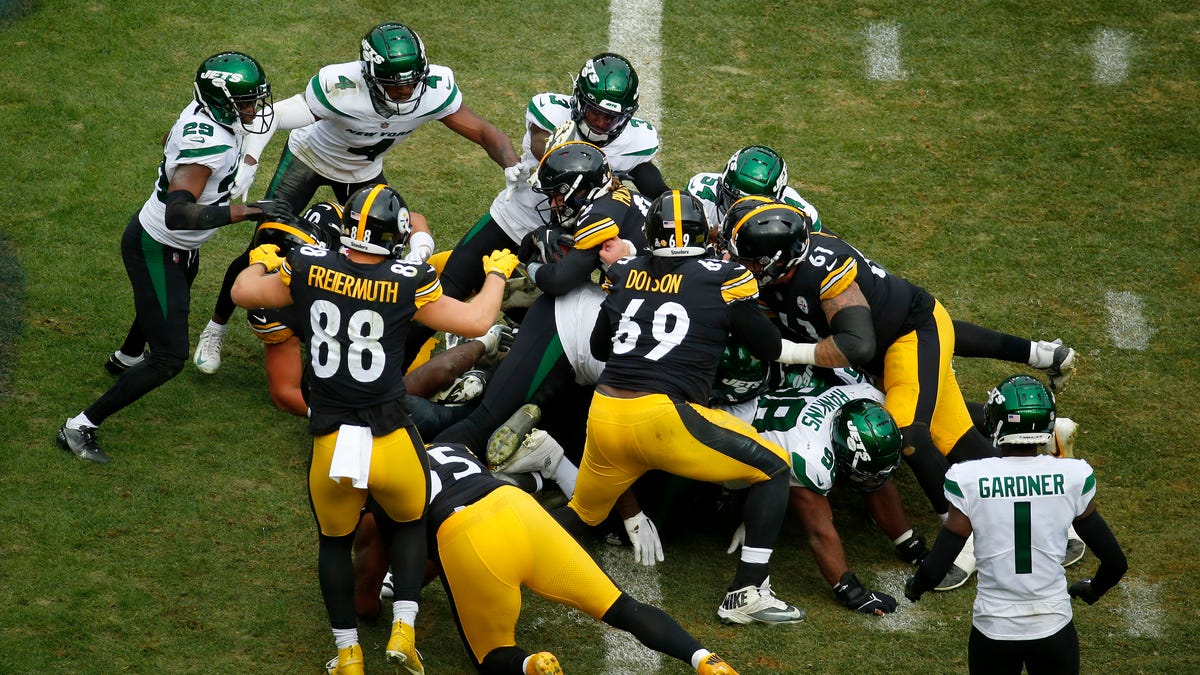Why don’t teams run more QB sneaks?

About a week ago, Jason and Travis Kelce were discussing goal-to-go short-yardage plays on their podcast, “New Heights.” Travis, a pass-catching tight end for the Kansas City Chiefs, seemed to think a pass play was the way to go. “I’m running some type of rollout,” said the younger brother. Jason, the Philadelphia Eagles’ center, was adamant that a quarterback sneak was the “only correct answer” though.
Why? Well, according to the elder Kelce brother, it has a 92 percent chance of gaining that one yard. Jason is shocked that more teams don’t run that play in short-yardage situations. This is an idea I’ve had for some time. Why don’t more teams run this play? It works almost every time. Even when teams knew it was coming, like when Tom Brady used to run it constantly in New England, it would still work. Just think about this past weekend. How many QB sneaks can you think of off the top of your head?
Kenny Pickett’s first touchdown was a QB sneak, and wouldn’t you know it, it was on third-and-goal. The Pittsburgh Steelers needed that one yard, and the play they went to was a QB sneak — and it worked, just as Jason Kelce said it would.
The Chiefs didn’t run a traditional QB sneak against the Bucs, instead motioning their tight end, Noah Gray, across the tight wing formation and then moving him under center for a quick snap. You could chalk that one up to more trickery than an actual QB sneak, but it worked. Gray got into the endzone on third-and-goal.
There were more that didn’t go for touchdowns, but most of them did gain the yardage the teams employing them were looking for. Then, you start looking at some goal-line stands from this past weekend. Even in a game where the Seahawks’ defense couldn’t stop anything, Seattle almost held the Lions out of the endzone at the end of the first half. The Lions ran the ball twice and threw an incompletion before finally pushing the ball in with Jamaal Williams on fourth-and-goal. It took Williams three tries to score that touchdown, and he finally did with zeroes on the clock at the end of the second quarter. That’s cutting it a little too close in my opinion. Why not just have Goff carry it on third down and get your seven without ever having to worry about fourth down?
G/O Media may get a commission

Up to 44% off
Prime Early Access – Insignia Fire TVs
Up to 44% off with Prime Early Access
The Prime Fall Deals start early with Prime member access to deals across the entire site. Included in this is a whole lot of Insignia Fire TVs—Insignia TVs with Amazon Fire TV built right in—for up to 44% off.
Obviously, it’s not a guarantee that Goff would’ve gotten in, but the percentages don’t lie. If more teams ran QB sneaks in short-yardage situations, it would probably become less viable, but until teams start picking up on it, why not, right?
According to a 2015 report from Yale, between 1998 and 2015, QB sneaks were being converted on fourth-and-1 82.8 percent of the time. For comparison, non-QB run plays had a conversion rate of 63.4 percent, and pass plays were converted at just a 62 percent success rate. That’s a massive difference, and the gap only gets larger when looking at advanced metrics. On fourth-and-2, QB sneaks were even more effective — an 89.7 percent success rate.
In terms of EPA per play type, QB sneaks on fourth-and-1 gave teams 1.61 expected points added to their drives. Non-QB run plays garnered an EPA of .83, while pass plays fell at .84. Between 1998 and 2015, there was only one season (2002) where QB sneaks were not the most efficient play on fourth-and-1. Pass plays had an EPA of just over 1.5 that season, while QB sneaks had a down year at around 1.4. That 2002 season can probably be viewed as an outlier. Pass plays only had one other season with an EPA greater than 1.2 in fourth-and-1 situations.
Of course, quarterback injuries are the biggest concern and likely the reason why more teams don’t run QB sneaks in short-yardage situations. In the podcast clip, Travis Kelce even recalls the time when Patrick Mahomes dislocated his knee on a QB sneak in 2019. However, the same people concerned with injury on sneaks seem to feel just fine when the same quarterback scrambles for six yards and gets popped by a linebacker. QB draws and scrambles are far more dangerous in terms of potential injury (assuming the quarterback doesn’t slide), yet those are viewed in high regard. Mahomes’ injury was awful, but he did only have to miss two games. Brady has run QB sneaks numerous times throughout his career and never suffered an injury because of one. It’s hard to think of any time a quarterback has been injured on a QB sneak aside from Mahomes.
Sure, the thought of being piled on by several players on both sides isn’t enticing, but it’s not as dangerous as it sounds. The real concern should be what goes on at the bottom of those piles — the grabbing and tearing at the ball, trying to fool the referees into thinking there was a fumble. That’s a legitimate concern, but to use one instance as a baseline for why QB sneaks should never be called is a disservice to the good it can do in those short-yardage situations.
Jason Kelce may be biased when saying “it blows his mind” that more teams don’t run QB sneaks. After all, offensive linemen love running plays where they get to just push their opponents into oblivion. However, just because he has bias doesn’t mean he’s wrong. He’s absolutely right, and maybe if more teams listened to him, we’d have more offense than ever before, instead of cowardly coaches punting on fourth-and-1 from their opponent’s 43-yard line.
For all the latest Sports News Click Here

